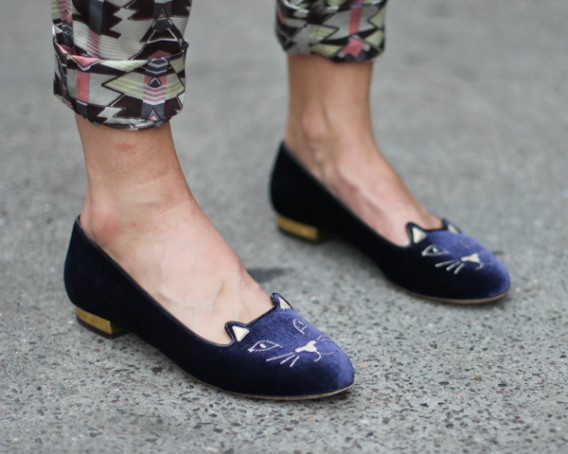Archive for September, 2012
This Proenza Schouler video distills the essence of what fashion truly is – the spirit of the times – into a Youtube video, which in itself is apropos for the times. What do Spongebob Squarepants, JonBenet Ramsey, and arms full of PS1 bags have in common? Proenza! Even just five years ago could you imagine a luxury fashion brand creating (gasp!) a Youtube video featuring memes? Much less in the style of a viral video with crude special effects and shaky, low-tech cinematography? Back in the day (aka the 90s) when I was growing up my memories of fashion ads were TV commercials with overwrought music, soft lighting and dramatic narration like this, this, and ESPECIALLY THIS.
It seems to me (and just a reminder, this entire blog is just my opinion) the key to Proenza Schouler’s success is how the boys continually tap into what’s cool. How do they do that? Cathy Horyn concluded her article on Proenza Schouler for the New York Times with Lazaro lamenting his inability to boil the Proenza girl down into three concise words. But actually, it makes perfect sense. The idea that an abstract creative concept could ever be defined in three words reveals a lack of understanding about the seismic shifts in meta-culture since the dawn of the 21st century. The Proenza girl is so post-post-modern she exists in the plural abstract form – there’s an infinite number of Proenza girls with limitless permutations. Her identity is entirely fluid and radically shifts between collections. One season she’s an urban prep schooler in paint splattered jeans, the next she’s a Googie statuette before again morphing into a karate kid. Proenza is the first 21st century luxury fashion house to come of age in the era of globalization with a post-post-modern customer.
To illustrate what I’m trying to describe about meta fashion and Proenza, just think about brands with a crystal clear visual alphabet as a contrast. Phoebe Philo’s Céline, Karl Lagerfeld’s Chanel, and now Alber Elbaz’s Lanvin. The clothes – and the girl – are instantly recognizable, and therefore those designers have less latitude to radically change the look, especially when holding companies and private equity firms have stakes in the business. Remember what happened to Paulo Melim Andersson? If you were to eliminate tweed from Chanel, would it still be Chanel? Hmmm… you’d have to wonder. I’m not saying that having a clear archetype a bad thing – in fact, in most cases it’s a very good thing (especially where profits are concerned) and keeps customers returning. Proenza Schouler might be the only design house to have a giant question mark at the center of the business where the customer belongs, and where nearly every other fashion brand has a very clear photo of who their girl is. Instead of being restricted by the customer, Proenza has complete freedom to create their customer from season to season. Jack and Lazaro have the power to explore new terrain every time. Each Proenza collection has a fresh new vocabulary and is a self-contained world unto itself. Very few brands can reinvent themselves regularly, and do it well year after year. Just look at Proenza’s last three fall collections. How is the same woman buying Fall 2010 also buying Fall 2011 and Fall 2012? It’s perplexing to the people who study the industry. Even Cathy Horyn was stumped.
Photos via Style.com
Women are drawn to the magic of Jack & Lazaro’s imagination, not seeing their mirror image in the brand. Proenza customers aren’t looking for something that already exists (themselves) in the clothing, they’re looking to be transported by the unadulterated fantasy of fashion. The moment that Proenza becomes predictable – or that the girl becomes pinned down – is the moment it loses its hypnotic quality. After all, the secret of the Proenza girl is that she can be anyone, anywhere, anytime.
How’s that for three words?
Fashion is such a small world. During my brief time at Opening Ceremony’s FNO party, one of the people I met was Kerrin of the blog CATiD. I had no idea that over the past few months she’s become pals with my close friend Rhianna. Her name should be in hypertext, but I can’t link to her anymore because one of the internet’s greatest tragedies took place: last year she deleted her blog Breakfast at Barneys. Upon hearing the news of her misguided decision, I promptly pulled a Dawson.

Pulling a “Dawson”
Believe me when I say Rhianna had one of the best written blogs that ever existed. Think Susie Bubble, but with bombastic wit, a solid grounding in literary studies while set in the city of Chicago, along with extended layovers in in Paris and Marrakech. Rhianna now works at one of the hippest places in New York. I’m not just saying that because she’s my friend, although I do think all my friends are amazing people. Oh so what, the ACNE flagship in Soho isn’t cool enough for you? I’ve berated her enough in private about starting a new blog. Kerrin, maybe you can convince our beautiful friend that she must – once again – share her brain juice (and killer style) with the world?
We all know that fashion is an incestuous world run by gatekeepers, so it’s really mystifying when these types of synchronicities happen to me. I can’t be that cool, I live in Chicago! Just kidding… but not really. There’s still a strong stigma against Chicago that I encounter every time I go to New York fashion week…
Harper’s Bazaar editor and street-style icon Joanna Hillman has the most incredible mane of hair. Every time I see her at New York Fashion Week I can’t help but wonder how it looks so lush. Researchers should decode her DNA so that in the future, when perfect children are bio-engineered in test tubes, “Joanna Hillman hair” is one of the genetic traits parents can select.













